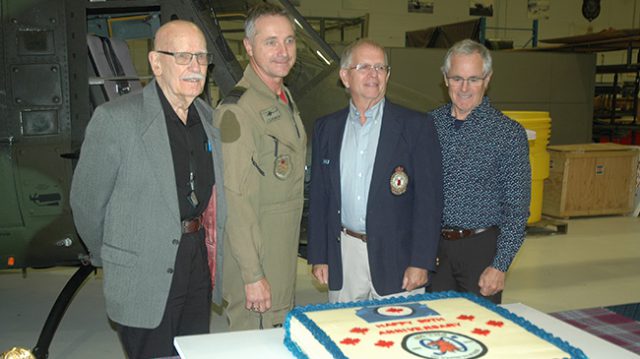
400 Tactical Helicopter Squadron (THS), the longest serving squadron in the Royal Canadian Air Force (RCAF), celebrated its 90th anniversary with an intimate gathering of current and former members on 6 October.
The small, private meet and greet was held at the 400 THS hangar at Base Borden, where attendees were welcomed to share their thoughts and stories of their time with the squadron prior to dinner at an open mic. The social event also served as an unveiling for the squadron museum, the existing space recently overhauled and populated with artifacts new to the museum. Together, the events aimed to offer fitting recognition of the impressive Air Force heritage the squadron represents, and the contribution and sacrifice by the men and women who have served in the unit over the past 90 years.
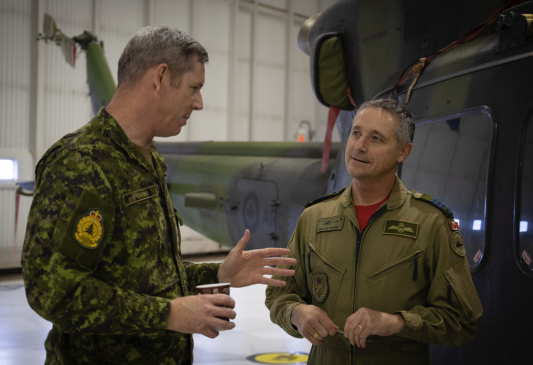
The squadron’s Commanding Officer, Lieutenant-Colonel Lyle Holbrook, has been with the unit for nearly a quarter-century and has seen a chunk of its history firsthand—including being part of the milestone 75th anniversary and flying no fewer than five aircraft: the Musketeer, Tutor, Jet Ranger, Kiowa, and Griffon.
Among the traits that make 400 THS stand out is the small but mighty attitude that seems to have been in place from its earliest days in 1932, when it was first stood up as Number 10 Squadron (later renamed 110 Squadron in 1937, and finally 400 Squadron in 1941).
“We’re one of the smaller squadrons. Definitely one of the smaller squadrons in 1 Wing and certainly one of the smaller squadrons in the [Canadian Forces]. But what we’ve done in the past, what we’ve taken part in and accomplished is nothing short of amazing,” said LCol Holbrook.
Belonging to 1 Wing in Kingston, 400 THS is a lodger unit with roots from its very beginning to summer deployment training at Camp Borden. It was officially dubbed “The City of Toronto Squadron” by the RCAF after being adopted by council in 1934 and given permission to use the title—one that it continues to display with pride.
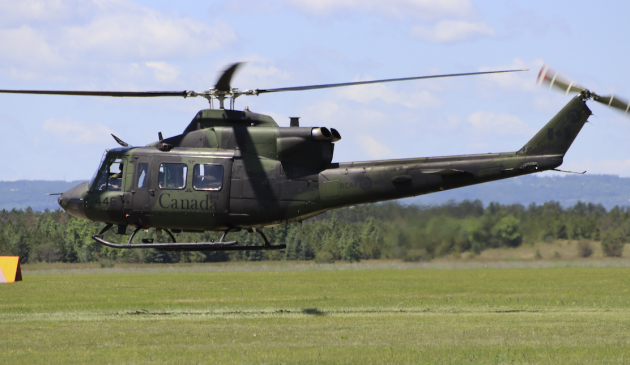
Though the squadron has an extensive history—outlined in great detail in the history books that LCol Holbrook keeps on his desk—a few achievements stand out above the rest. 2010 was a particularly special year, with 400 THS serving as the lead unit for the helicopter security force for the winter Olympics, followed by a significant role in the G8 and G20 summits. Of the 25 helicopters deployed for the security force, three aircraft were designated to transport international leaders from Pearson airport to Gravenhurst, Ont. and back for the G8 summit.
LCol Holbrook has also had the great personal honour of flying King Charles III (then Prince Charles). But the proudest moment of his career was serving in Afghanistan with 400 THS during the CAF’s final rotation. He was one of dozens of squadron members deployed in support of Operation Athena from September 2008 to December 2011.
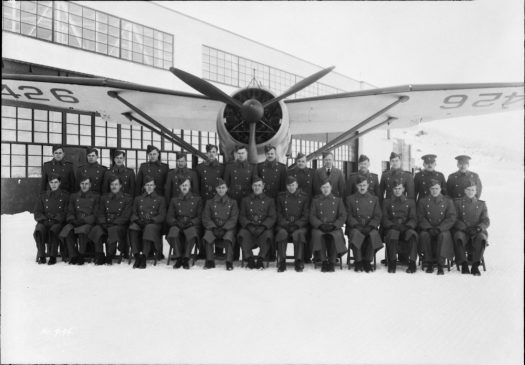
“We have, I think, punched well above our weight as a squadron,” said LCol Holbrook.
In its early days, the squadron was the first to arrive in Britain after the start of the Second World War. The engaged in roughly 3,000 sorties and logged 19,000 flying hours, with 31 lives lost throughout the war.
During the Raid on Dieppe the squadron deployed 12 aircraft, 17 pilots and ground crews to protect and assist ships and troops. During the conflict, they destroyed, damaged or disabled to some extent more than 150 enemy locomotives and 34 trains, earning them the nickname “The Train Busters” by the media.
They have also been called one of the best photo reconnaissance squadrons in the Allied Air Forces, capturing photographs that were essential for creating maps. They were responsible for providing 10,679 negatives to assist with the planning to cross the Rhine River into Germany—in a single day. The squadron is credited with having played a vital part in the D-Day results.
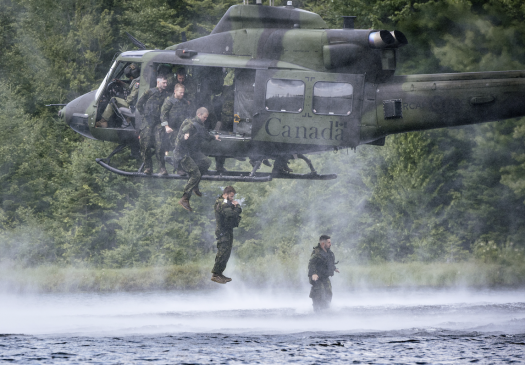
Those are just a few examples of the squadron’s rich history, though it’s not one without its dark spots. Dangerous accidents and casualties were not uncommon in the various aircraft over the years, the causes ranging from technical malfunctions to collisions to fatal pilot errors.
Its legacy though, is one of strength, and hope.
In summer 1948, a small group attended a long-range navigation training exercise in Moosonee, Ont. To show appreciation for the hospitality received by the northern town, they flew seven Vampire aircraft (new to the RCAF and setting records for speed) from Camp Borden to Moosonee and Moose Factory to drop a mass delivery of the Toronto Globe and Mail newspaper. Used to receiving week-old news, this was the first time the towns had received such a delivery on the same day of printing and provided great delight to the thankful residents.
That same year the squadron also focused on bringing smiles to children. While hosting a Christmas party for children of the squadron members and kids from the Home for Incurable Children, Santa arrived in a Harvard aircraft to deliver gifts for everyone. The tradition continues to this day, with the annual delivery of toys to Toronto’s Hospital for Sick Children—now known as Operation Ho Ho Ho.

There is an undoubted sense of pride that carries forward in the way 400 THS operates today. Commanding Officer LCol Holbrook says that pride is important to pass along to new members by celebrating anniversaries like this one.
For him, honouring this milestone is special not just for the members of 400 THS, but for all members of the RCAF, past and present, who will soon be celebrating their own milestone anniversaries.
“I couldn’t be more proud to be the CO of this squadron during this 90th anniversary,” he said. “It’s significant for me, anyway, to help be a part of making sure that we continue to celebrate that legacy.”
400 Squadron firsts
400 THS is the first…
- Auxiliary squadron stood up in the RCAF;
- RCAF squadron to go overseas after hostilities begin during the Second World War;
- RCAF squadron to move to Normandy after D-Day;
- RCAF squadron to cross the Rhine into Germany near the end of the Second World War;
- Auxiliary squadron to be re-activated after the end of the Second World War;
- RCAF squadron to be presented with its Royal Standard.
By: Emily Nakeff, Editor





